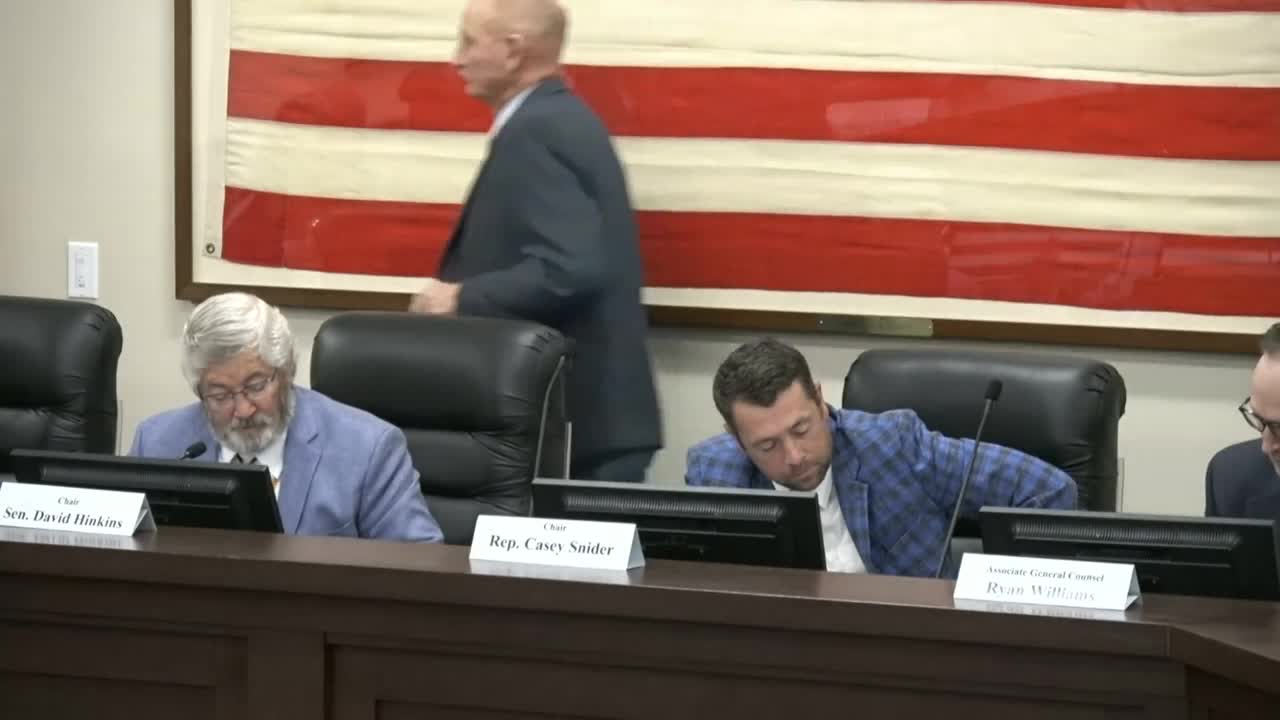Utah faces urgent water infrastructure funding crisis
October 17, 2024 | Utah Interim, Utah Legislative Branch, Utah
This article was created by AI summarizing key points discussed. AI makes mistakes, so for full details and context, please refer to the video of the full meeting. Please report any errors so we can fix them. Report an error »

In a recent government meeting, officials discussed the pressing need for funding water-related capital projects in Utah, highlighting the state's significant infrastructure challenges and the implications of new legislation. Candace Hosseiniager, director of the Division of Water Resources and chair of the Water Development Coordinating Council, presented an overview of the current status of water funding and infrastructure needs, emphasizing the urgency of addressing these issues as the state prepares for a growing population.
The council, established in 1983, has been tasked with overseeing water funding initiatives aimed at conservation, development, and protection of Utah's water resources. Recent legislative changes, particularly House Bill 280, have expanded the council's responsibilities to include conducting reviews of water infrastructure and prioritizing funding for various projects. Hosseiniager noted that the state faces an estimated $60 billion in water infrastructure needs by 2060, encompassing drinking water, water quality, and irrigation projects.
During the meeting, representatives expressed concerns about the adequacy of current funding mechanisms, particularly in light of declining federal support for state revolving funds. The discussion revealed that while the state has set aside significant funds—approximately $250 million in the Water Infrastructure Restricted Account—there are limitations on how these funds can be utilized. Additionally, local water suppliers and districts are increasingly reliant on user charges and property taxes to meet their financial needs.
The meeting also highlighted the importance of ongoing funding to maintain and upgrade existing infrastructure. Representatives discussed the necessity of a balanced approach to funding, questioning whether the state should bear the full financial burden for local water projects or if local entities should contribute more significantly.
As the council moves forward, it aims to complete a report on existing funds and develop a comprehensive plan for prioritizing water infrastructure projects. The urgency of these discussions underscores the critical need for strategic planning and investment in Utah's water resources to ensure sustainability for future generations.
The council, established in 1983, has been tasked with overseeing water funding initiatives aimed at conservation, development, and protection of Utah's water resources. Recent legislative changes, particularly House Bill 280, have expanded the council's responsibilities to include conducting reviews of water infrastructure and prioritizing funding for various projects. Hosseiniager noted that the state faces an estimated $60 billion in water infrastructure needs by 2060, encompassing drinking water, water quality, and irrigation projects.
During the meeting, representatives expressed concerns about the adequacy of current funding mechanisms, particularly in light of declining federal support for state revolving funds. The discussion revealed that while the state has set aside significant funds—approximately $250 million in the Water Infrastructure Restricted Account—there are limitations on how these funds can be utilized. Additionally, local water suppliers and districts are increasingly reliant on user charges and property taxes to meet their financial needs.
The meeting also highlighted the importance of ongoing funding to maintain and upgrade existing infrastructure. Representatives discussed the necessity of a balanced approach to funding, questioning whether the state should bear the full financial burden for local water projects or if local entities should contribute more significantly.
As the council moves forward, it aims to complete a report on existing funds and develop a comprehensive plan for prioritizing water infrastructure projects. The urgency of these discussions underscores the critical need for strategic planning and investment in Utah's water resources to ensure sustainability for future generations.
View full meeting
This article is based on a recent meeting—watch the full video and explore the complete transcript for deeper insights into the discussion.
View full meeting

